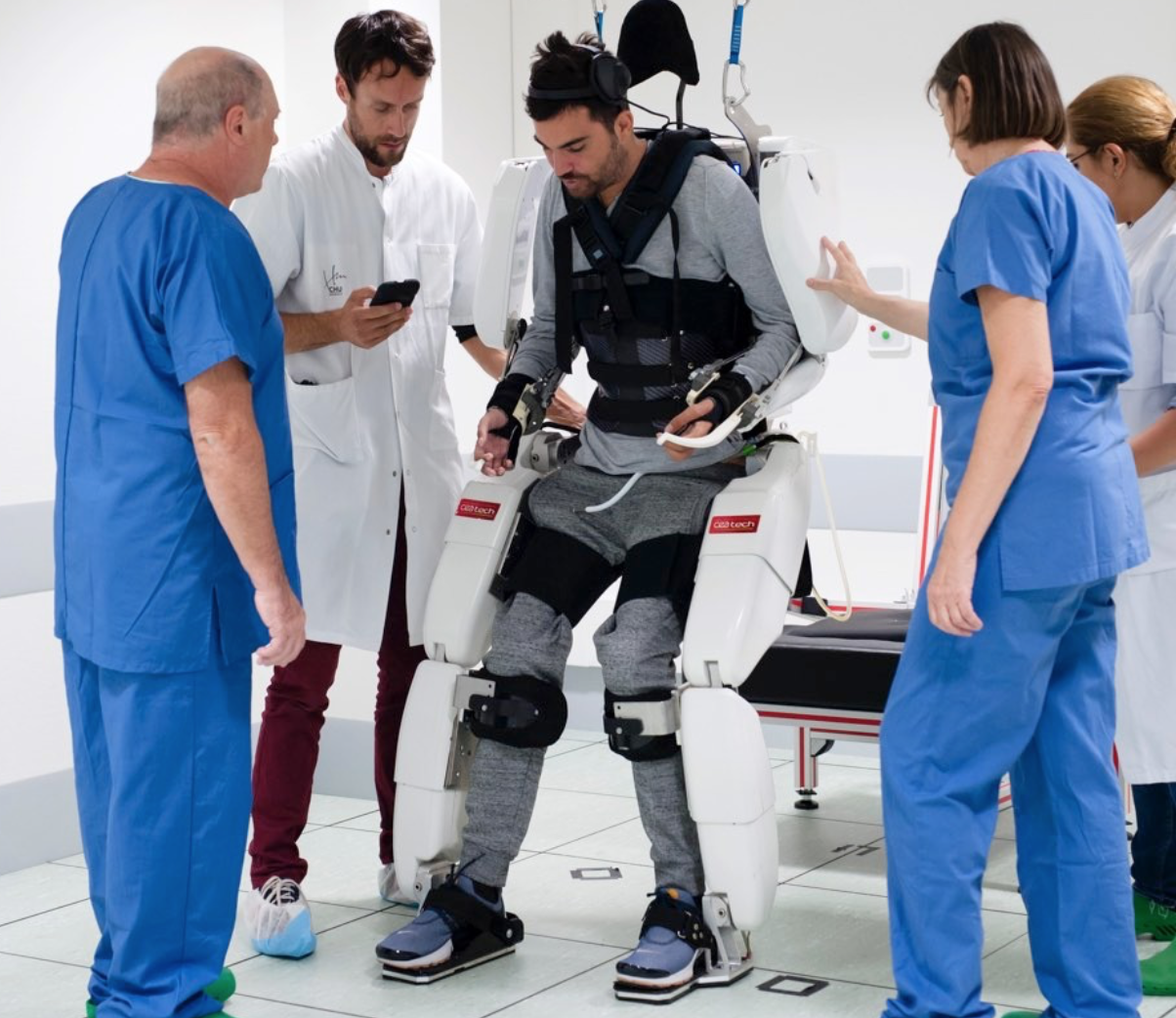Alim Louis Benabid and Clinatec/University of Grenoble colleagues have developed a brain computer interface controlled exoskeleton that enabled a tetraplegic man to walk and move his arms. Two 64 electrode brain implants drove the system.
Benabid explained the benefits, stating that “previous brain-computer studies have used more invasive recording devices implanted beneath the outermost membrane of the brain, where they eventually stop working. They have also been connected to wires, limited to creating movement in just one limb, or have focused on restoring movement to patients’ own muscles.”
The exoskeleton can only be used in the lab at this point, as it still must be connected to a ceiling-harness, since it is unable to make small adjustments necessary to prevent falls.
Join ApplySci at the 12th Wearable Tech + Digital Health + Neurotech Boston conference on November 14, 2019 at Harvard Medical School featuring talks by Brad Ringeisen, DARPA – Joe Wang, UCSD – Carlos Pena, FDA – George Church, Harvard – Diane Chan, MIT – Giovanni Traverso, Harvard | Brigham & Womens – Anupam Goel, UnitedHealthcare – Nathan Intrator, Tel Aviv University | Neurosteer – Arto Nurmikko, Brown – Constance Lehman, Harvard | MGH – Mikael Eliasson, Roche – Nicola Neretti, Brown
Join ApplySci at the 13th Wearable Tech + Neurotech + Digital Health Silicon Valley conference on February 11-12, 2020 on Sand Hill Road featuring talks by Zhenan Bao, Stanford – Rudy Tanzi, Harvard – Shahin Farshchi – Lux Capital – Sheng Xu, UCSD – Carla Pugh, Stanford – Nathan Intrator, Tel Aviv University | Neurosteer – Wei Gao, Caltech
